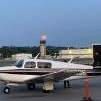Compression Tester Master Orifice Explanation
-
Members Online
- Rmnpilot
- Rick Junkin
- ElkoRandy20J
- Greg Ellis
- ta2too
- wstull87
- bixmooney
- Larry
- Parker_Woodruff
- Gee Bee Aeroproducts
- NickM20F
- TangoTango
- Max Clark
- Stubby
- Guillaume
- LOCOLJ
- Controller92
- eman1200
- thomas1142
- BrentS
- tim5853
- caractacuspdoom
- EricJ
- toto
- stevesm20b
- CVO
- hammdo
- Paul Thomas
- SKI
- PeytonM
- DXB
- 00-Negative
- tclimb
- Jsno
- Tom sears
- MDMooney
- wombat
- Ospeed
- Yetti
- Officer25
- midlifeflyer


Recommended Posts